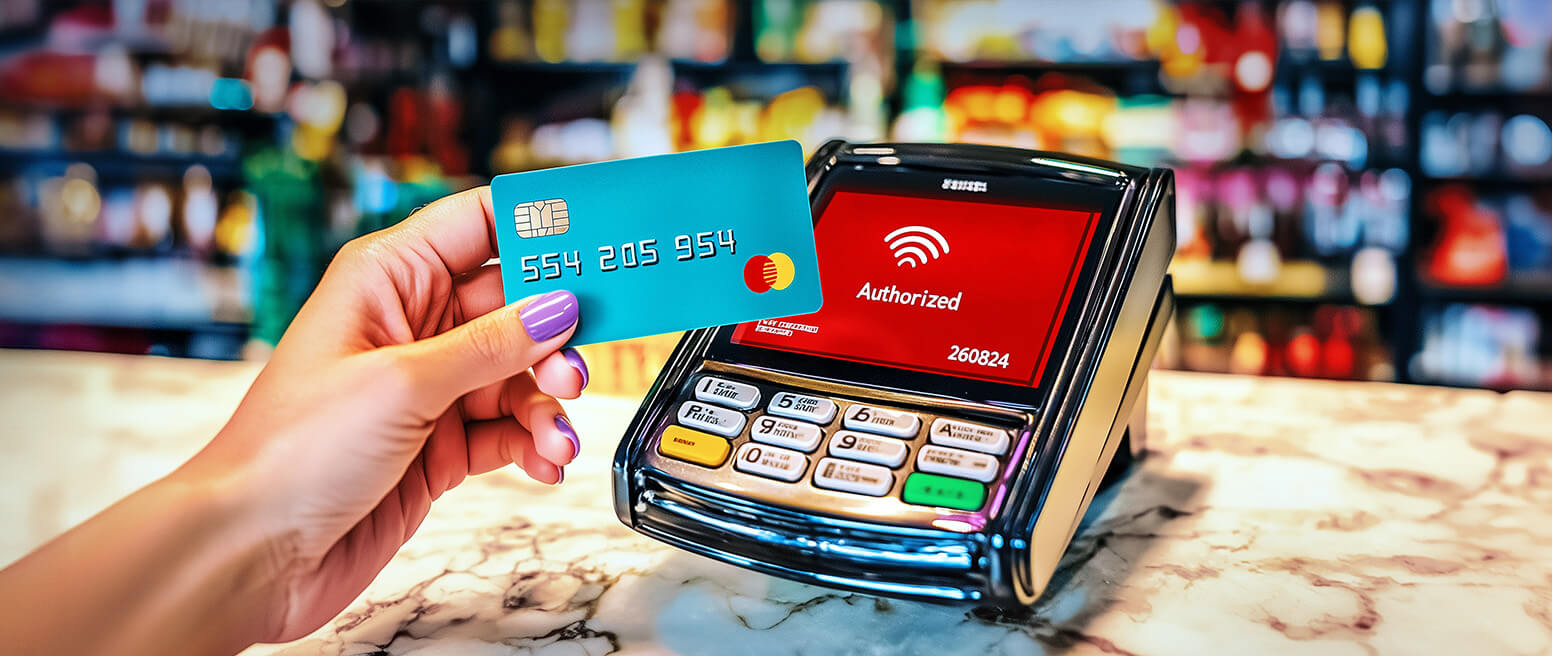Crucial Information & Tips to Reduce Your Credit Card Processing Fees
If you accept credit cards, you can expect fees to eat up 1% to 3.5% of every transaction you submit for processing. Figuring out exactly how much you’ll pay in fees depends on a lot of factors, though.
You have to account for your payment processor’s fee structure, your line of business, and the type of cards you accept. Whether you conduct online or in-person transactions (or both) will be a big factor, too.
In this article, we take a closer look at payment processing fees. I’ll break down how those fees get calculated, and also offer a few tips and tricks that you can implement to keep your costs down.
Recommended reading
What are Credit Card Processing Fees?
- Credit Card Processing Fee
Credit card processing fees are the costs that merchants pay to process card transactions. These fees cover the operational and technological expenses associated with processing payments, including the transfer of funds between the cardholder's bank (issuing bank) and the merchant's bank (acquiring bank).
[noun]/krə • dət • kard • prä • səs • iNG • fē/
Payment processing fees are costs that you pay for the privilege of accepting credit, debit, and prepaid cards. Issuers, card networks, and payment processors all assess fees every time a transaction is processed. The fees are typically expressed as a percentage of the transaction amount.
Processing fees are sometimes stated as a single figure, but they can really be broken down into four, more specific fees:
Merchant Discount Rate is 2.35%
Are Processing Fees the Same as Interchange Fees?
No. Interchange fees make up the majority of the fees you pay to process a transaction. But, most people use “processing fees,” to refer collectively to interchange fees, the processor markup, and card network assessment fees.
Like I mentioned above, the credit card processing fees you pay are made up of several different, specific fees assessed by different parties in the value chain. Interchange fees, which are paid to issuers, are the largest component; they make up between 70-90% of total payment processing costs.
Network assessment fees are more minor; these fees are received by card networks, and they make up 3-10% of total processing costs, on average.
The remaining 7-20% of your processing fees comes in the form of a processor markup and acquiring fees. This is any amount over and above the sum of the interchange and network assessment fees that are passed onto you. Processor markups cover the processor’s operating costs, including software development, sales, customer support, legal expenses, and margins.
How are Payment Processing Fees Structured?
Credit card processing fees vary depending on the card swiped at checkout (card brand and rewards tier), the type of transaction (online or offline), and the markup charged by your payment processor.
As a general rule of thumb, you can start by calculating the interchange fee, plus the network assessment fee. The following table is an example of how interchange fees break down across some of the largest card networks (as of this writing):
| Payment Network | Low Interchange Fee Range | High Interchange Fee Range | Average Assessment Fee |
| Visa | 1.15% + $0.05 | 3.15% + $0.10 | 0.14% |
| Mastercard | 1.25% + $0.05 | 3.15% + $0.10 | 0.1375% for transactions under $1,000; 0.01% for transactions of $1,000 or more |
| Discover | 1.45% + $0.05 | 3.05% + $0.10 | 0.13% |
| American Express | 1.35% + $0.10 | 3% + $0.10 | 0.15% |
Merchants pay interchange fees via their payment processor. As we’ll see in the next section, these are typically rolled into other credit card processing fees assessed by the processor and acquirer.
How are Payment Processing Fees Structured?
When you contract with a payment processor, you pay interchange fees, plus fees assessed by your processor. These providers structure fees using one of several models: interchange-plus, subscription, tiered, or flat-rate structures:
Other Factors Impacting Credit Card Processing Fees
We now have a better understanding of how interchange and assessment fees affect your revenue. So, let’s dig into some additional circumstances and how they might impact your total fees.
Remember, all total fees will combine interchange and assessment fees, no matter which processor you choose. From there, several factors influence your overall payout, including:
Your processor may require you to obtain proprietary equipment to process card payments. These costs can fluctuate drastically from one end of the payment spectrum to another.
Some payment providers offer basic mobile readers for free (like Square), while others run around $50. If you need in-store terminals, however, equipment costs can run anywhere from $50-1,000. Whichever model and provider you choose, don’t forget to factor these costs into your bottom line.
Other Credit Card Processing Costs to Consider
Looking at ads from companies that handle payment processing, you'll see a lot of talk about their low rates. That's fine... but, when you're choosing a service, it's smart to remember that the rate they show in the ad might not be the full story.
There are lots of other fees that could add to what you pay in the end. These can include:
- Application Fees
- Setup Fees
- Gateway Integration Fees
- Per-Transaction Gateway Fees
- Transaction or Batch Fees
- Software Fees
- Statement Fees
- Reporting Fees
- PCI Compliance/Certification Fees
- Ongoing or expanded Customer Support Fees
- Refund Fees
- Address Verification Fees
- Monthly Minimums or Recurring Payments Fees
- Cancellation Fees
- Merchant Account fees
Some fees are one-time costs. Others might be recurring monthly costs, or they might be charged for each transaction.
Not every provider will assess all these fees; some might include everything in their advertised rate. The key for business owners is to ask about all the possible fees to get the full picture of what you'll be paying before you pick a service.
How to Keep Your Payment Processing Fees Low
Card processing fees are inevitable. But that doesn’t mean your current rate is.
Your processing fees are negotiable up to a certain point. However, if your goal is to reduce the overall cost of processing, there are some simple ways to do this:
There are many well-known companies that use selective card acceptance to cut down on processing fees. If you shop at Costco, for example, you may notice that they only accept Visa-branded cards. That’s because Visa, in exchange for this exclusive arrangement, charges the warehouse giant just 0.4% per transaction, allowing Costco to keep prices low for its members.
Processing Fees: Just One Piece of the Puzzle
Payment processing fees are a significant cost of accepting credit cards. But, they’re not the only costs you’ll encounter.
Controlling loss is crucial here. You’ll be penalized for excessive chargebacks, so it’s vital that you prioritize this issue. To fight both criminal fraud and illegitimate chargebacks, you’ll need a comprehensive fraud management strategy that addresses both concerns at once.
Thankfully, this isn’t something you have to do alone. With over a decade of industry-leading experience in the realm of fraud mitigation and chargeback management, Chargebacks911® is here to help your business meet incoming challenges and exceed revenue limitations. Give us a call and get started today.
FAQs
Why am I being charged a processing fee?
While no merchant is a huge fan of credit card processing fees, they do play a fundamental role in the payment process. The fees are used to pay for the infrastructure and technology that allows funds and transaction data to be processed and transmitted from one party to the next in the transaction process.
Are processing fees legal?
Yes. Credit card processing is a service. Like all services, fees exist to cover the costs associated with facilitating that service.
Who pays processing fees?
Merchants are the primary party responsible for paying processing fees.
How do I get rid of processing fees?
You can’t “get rid of” processing fees. However, you can limit your processing fees by decreasing your exposure to fraud and chargebacks, shopping around for the best payment processor in your transaction tier, and limiting the number of small-dollar transactions you run each day.
What is the typical fee for credit card processing?
Credit card processing fees typically range from 1% to 3% of the transaction amount. Exact costs depend on the card brand, setting of the transaction, and payment processor you use.
How do I pass on the credit card processing fee to the customer?
In some jurisdictions, you may charge buyers a credit card processing surcharge at checkout. Federal law caps credit card surcharges at 4%, but some states may impose lower caps or even ban surcharges entirely.
Is it illegal to charge a credit card processing fee to customers?
It depends on your jurisdiction. Credit card processing fees are entirely prohibited in four states: Maine, Massachusetts, Connecticut, and California. Other states, like New York, New Jersey, South Dakota, and Nevada, allow merchants to charge buyers the actual processing fee incurred by the merchant. Still others, like Colorado, limit credit card processing fee surcharges to 2%, which is half the federal limit of 4%.
What is a fair credit card processing fee?
A fair credit card processing fee will depend on several factors. These include your risk level as a merchant, the type of cards you accept, and whether you accept in-person or online payments. In general, you can expect credit card processing fees to cost between 1% and 3% of the transaction amount.















